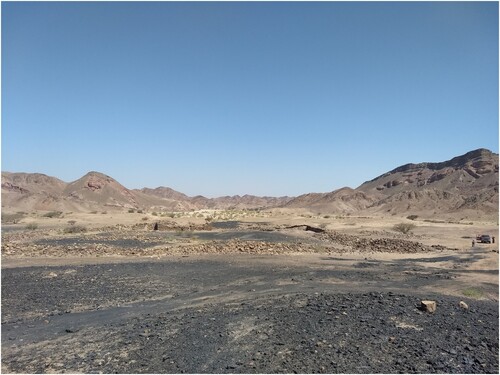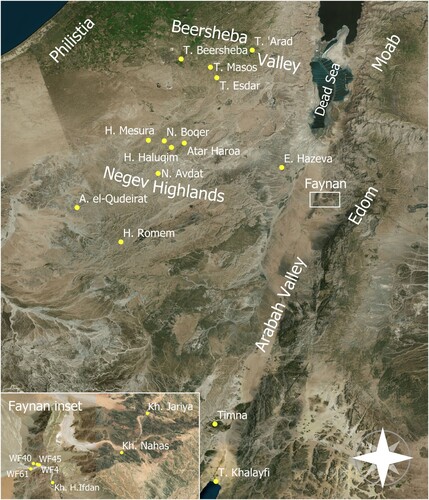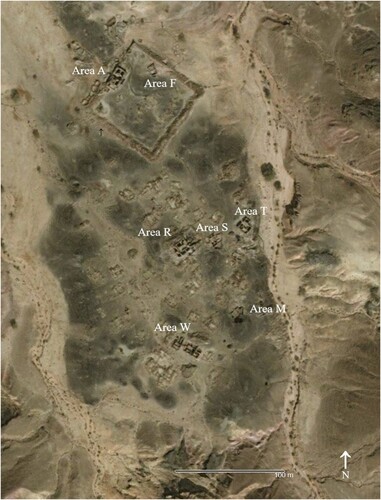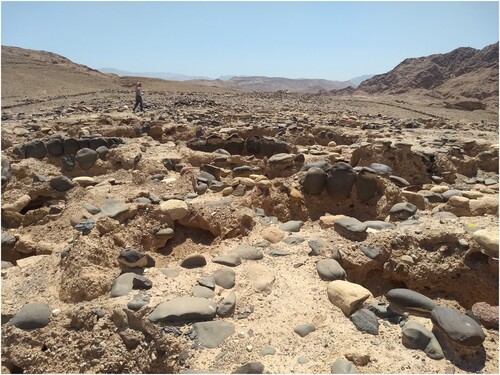Figures & data
Table 1. History of occupation at Khirbat an-Nahas and Khirbat al-Jariya (adapted from Levy et al. Citation2014, .1 and Liss et al. Citation2020, ).
Figure 3. View of the fortress at Khirbat an-Nahas, from the south-east, in 2019 (photo by J.M. Tebes).

Table 2. Summary of the nature of the evidence from Iron Age Faynan.
Table 3. Caprovine and cattle exploitation at Iron I-IIA sites of the Negev and southern Jordan. Percentages deduced from the number of specimens.
Table 4. Chronological sequence and interrelation of contemporary events in early Iron Age Faynan and the Negev.



